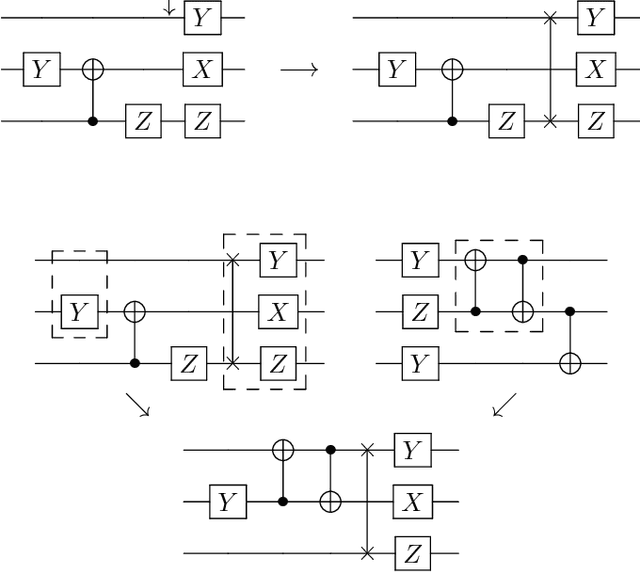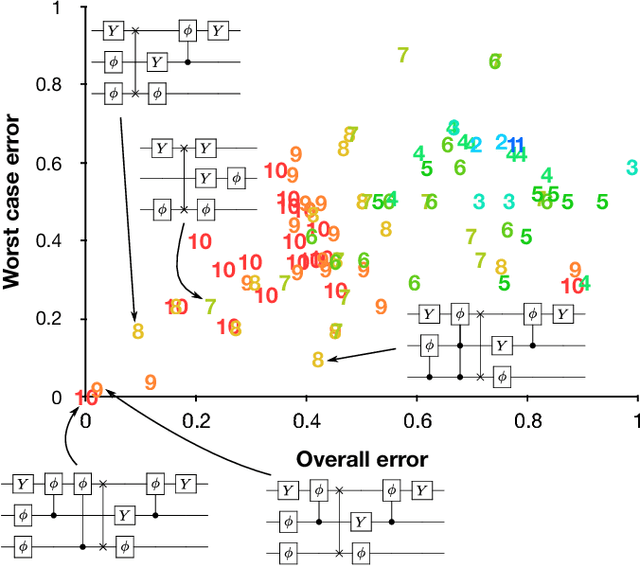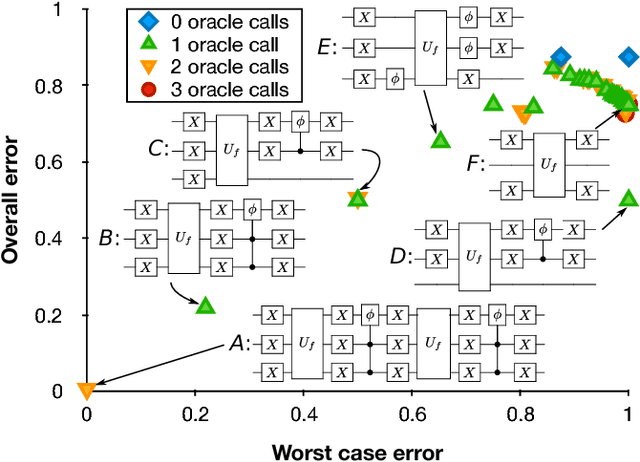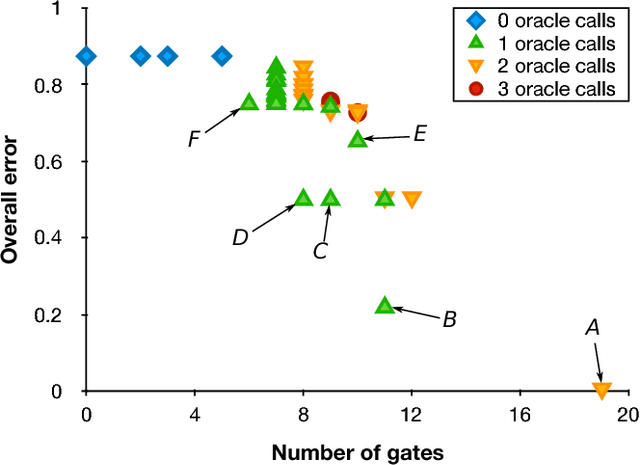Alessandro Fedrizzi
Multi-objective evolutionary algorithms for quantum circuit discovery
Dec 11, 2018



Abstract:Quantum hardware continues to advance, yet finding new quantum algorithms - quantum software - remains a challenge, with classically trained computer programmers having little intuition of how computational tasks may be performed in the quantum realm. As such, the idea of developing automated tools for algorithm development is even more appealing for quantum computing than for classical. Here we develop a robust, multi-objective evolutionary search strategy to design quantum circuits 'from scratch', by combining and parameterizing a task-generic library of quantum circuit elements. When applied to 'ab initio' design of quantum circuits for the input/output mapping requirements of the quantum Fourier transform and Grover's search algorithm, it finds textbook circuit designs, along with alternative structures that achieve the same functionality. Exploiting its multi-objective nature, the discovery algorithm can trade off performance measures such as accuracy, circuit width or depth, gate count, or implementability - a crucial requirement for first-generation quantum processors and applications.
Ghost imaging with the human eye
Aug 13, 2018



Abstract:Computational ghost imaging relies on the decomposition of an image into patterns that are summed together with weights that measure the overlap of each pattern with the scene being imaged. These tasks rely on a computer. Here we demonstrate that the computational integration can be performed directly with the human eye. We use this human ghost imaging technique to evaluate the temporal response of the eye and establish the image persistence time to be around 20 ms followed by a further 20 ms exponential decay. These persistence times are in agreement with previous studies but can now potentially be extended to include a more precise characterisation of visual stimuli and provide a new experimental tool for the study of visual perception.
 Add to Chrome
Add to Chrome Add to Firefox
Add to Firefox Add to Edge
Add to Edge